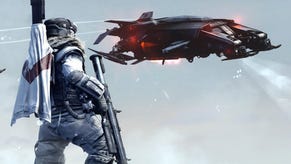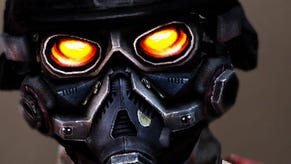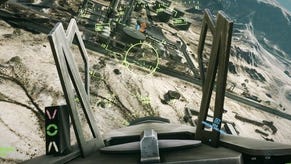Digital Foundry vs. Killzone 3
Sev the best for last.
Similar to the 3D support, Guerrilla optimises performance by modifying the LODs - simpler models are in play but because the screen is that much smaller, it is difficult to tell the difference. The effect is impressive - frame-rate is very consistent indeed in the split-screen mode, with only the occasional scene offering any real kind of "gotcha" in terms of the performance. In fact, the game seems to be much smoother than the 3D mode in places. The only real negative here comes from the LOD popping - models change in complexity right before your eyes while scenery and effects can appear from nowhere.
The pop-in isn't such a major concern - it's visible, it's a bit off-putting, but it doesn't affect the core enjoyment you get from the game. The transition from a widescreen field of view to the squarer window we get does cause some problems though. It's difficult to see where you're supposed to be going at times and zeroing in on snipers in particular is significantly more difficult than it is in the single-player mode.
One nice little touch in the co-op split-screen mode is that progression through the game isn't tied to the single-player mode, as it is in the Halo games. Once you've completed the solo campaign, you can start again from scratch with the co-op mode and the experience is significantly different and fresh that it feels like you're getting additional value from the game.
Killzone 3: The Digital Foundry Verdict
Killzone 2 was a release that pushed back the barriers of console technology, but the long, hard, unrelenting slog of the single-player campaign made it a game that was hard to develop a real connection with. It demanded respect as a technical achievement, but it lacked a level of invention in the game design that matched the accomplishments of that incredible engine. Even elements such as the controller lag issue seemed to hint at a game that concentrated on the technical side of things at the expense of raw playability: how else could an end-to-end latency often in excess of 200ms not be addressed during production?
This new sequel is a significant improvement in every area that matters and it's a must buy for PlayStation 3 owners. The single-player campaign is fun and exciting from start to finish and never feels artificially prolonged. New weapons are introduced that are a joy to wield, but crucially, they are never over-used. In addition, some of the extended set-pieces in the game offer an audio-visual experience that propels Killzone 3 way ahead of its competitors: the prolonged, pitched battle against the MAWLR in particular is nothing short of spectacular.
There has been some criticism of the way Killzone 3 switches from a single campaign into a series of more self-contained "chapters", introducing more variety in the locations, but making it feel more similar to its competitors in the process - an argument presented by Dan Whitehead in his 8/10 Eurogamer review.
The flipside to this argument is that despite the changes in locale, the style of the game remains entirely consistent from start to finish, while eliminating the feeling of "grinding" through the levels that was most noticeable during the first half of Killzone 2's campaign. To put it plainly - this is not a "me too" game, though Guerrilla's bizarre inclusion of a shooting range tutorial at the beginning of Killzone 3 not only gives the immediate impression of desperately wanting to be COD, but also comes across as a bit of a buzz-kill, when the game should be kicking off with a bang. Thankfully this is just a minor, if frustrating diversion before the action really begins.
The only other criticisms we could muster concerned a feeling that the game design still didn't exercise the full potential of the tech. For example, environmental kills being limited to exploding barrels (or plants) also feels remarkably old-skool for a game that is so technologically advanced.
From a technical perspective, most - if not all - of the major issues in Killzone 2 have been resolved or significantly improved: frame-rate is generally smoother, and thanks to the improvements Guerrilla has made to the way controller input is handled, even when things do get busy and performance drops, the game still feels tight - this is something you'll really appreciate if you're playing in co-op or 3D modes, where Killzone 3's renderer is really pushed to its limits.
After playing this, it's really difficult to go back to Killzone 2's control system: it simply feels slow and ponderous in comparison. While some of the "heft" and inertia in the controls has inevitably had to be sacrificed, the result is a big win for the playability of the game and contributes significantly to the core experience.
Just like its predecessor, as a technological demonstration of the power of Sony hardware, Killzone 3 is a hugely impressive piece of work. But what makes this game so special is that the core gameplay experience is just so strong: in the midst of battle, nothing looks like it, nothing plays quite like it. For PlayStation 3 owners it really is a must-buy.
















